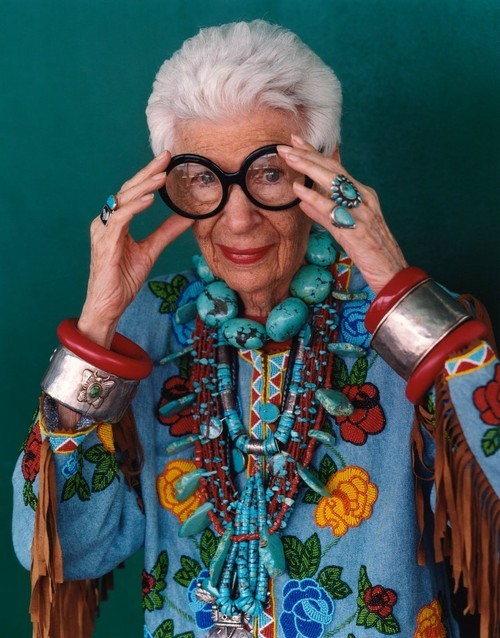

even the most recent CocoRosie video indulges my love:




 [a polaroid of a person outdoors, with long brown hair wearing a colourful native american inspired "war bonnet" and bright red lipstick. they are covering their eyes with the back of their hands and is expressionless. the text underneath the polaroid reads "Until mainstream society takes Natives seriously, it won't take Native issues seriously. Carticatures, mascots, costumes and cartoons don't need running water, after all." Sheena Rotman (The Signal)]
[a polaroid of a person outdoors, with long brown hair wearing a colourful native american inspired "war bonnet" and bright red lipstick. they are covering their eyes with the back of their hands and is expressionless. the text underneath the polaroid reads "Until mainstream society takes Natives seriously, it won't take Native issues seriously. Carticatures, mascots, costumes and cartoons don't need running water, after all." Sheena Rotman (The Signal)]

Eskimo Sisters is a new space in Providence for music, art, delicious treats, sparklers, general silliness, general seriousness, kittens, puppies, and magical unicorns.oh, and i suppose the magical northern "Eskimo" people fall right into that category, too! what a perfect name! /bitchy sarcasm. to top it off, the term "Eskimo Sisters" supposedly refers to two women who have slept with the same man. we all know how much we love our racial naivety with a side order of hypersexualization, don't we?
I understood why the headdresses seemed like an attractive accessory. People want something closer to the ethereal and the spiritual. To look ethnic and feel closer to nature. But is their whim to play earthy mystic for a night greater than mine to enjoy an evening without feeling accosted by racist costume?she concludes her powerful article with this statement:
I may grow wiser and regret my actions, but even if those women do remain clueless and forget everything I said, I at least made them uncomfortable for five minutes of their night, and right now, that's worth it, to me.for her sake, mine, and other people who have been taking up this fight, i hope she is right. her experience reminds me of a lot of my own, of my internalized racism as a mixed race french-canadian/abenaki kid growing up. of playing cowboys and indians and always being relegated to the role of the "indian." of my own family's erasure and active denial of our native roots.
Okay, I’ll play your game.
Lets pretend, and put aside the past, the genocide, the theft of land, peoples and language - all things deemed to have happened “long ago.” I’m not going to address these at all.
So here we are- modern day, new slate.
The act of cultural drag is still a problem. This is because systematic racism of Native American people still exists, and is overwhelmingly aggressive. We are still encountering it every day of our lives - in textbooks, at school, going shopping, using government facilities, interacting with the police, with health care systems, with our religious freedom, with the colour of our skin - we are met with derision and antagonism for our mere existence. With words used to keep us in our place. This is not ancient history, it is the every-day existence of a people who are still alive.
...When you choose to dress up like one of us, you erase us. You transform a group of doctors, writers, trades people, teenagers, mothers, fathers, singers — individuals, into one absurd caricature unworthy of respect, identity - autonomy....If our countries start to think of us as human beings, then our deeper issues may one day come to resolution as well. Just because my mission seems trivial - what impact could fashion possibly have?- doesn’t mean I’m not actively fighting the system that imposed the ideologies in the first place.
LINKS:
Kate Burch's tumblr
Download at zine library here.
Accosted by racist costumes: Expressing displeasure with something no one else has a problem with means revealing yourself as "the other" by Katrina Richardson
"Eskimo Sisters" in Indian headdresses by Newspaper Rock: Where Native America meets pop culture
Eskimo on Wikipedia
Ohnotheydidn't's feminist livejournal community is currently having a discussion aboutcultural appropriation.
OFFENSIVE HALLOWEEN SHIT I RECOMMEND NOT LOOKING AT:


Edwige is so cool, she makes Edie Sedgwick look like Stephanie Tanner.


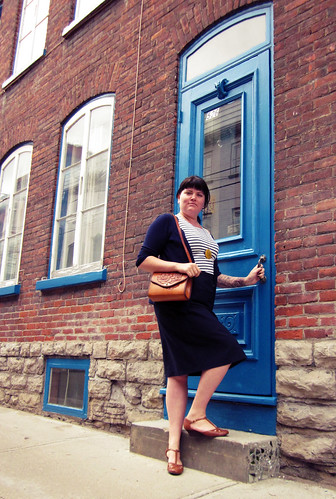
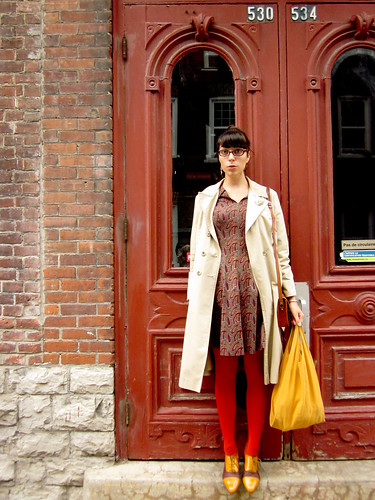

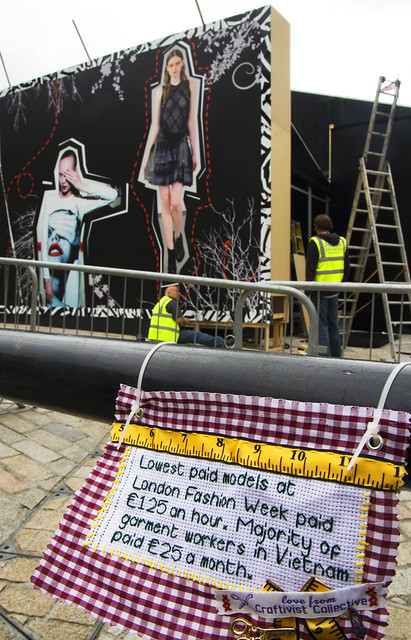
Lowest paid models at London Fashion Week paid £125 an hour. Majority of garment workers in Vietnam paid £25 a month. - love from the Craftivist Collective
To expose the scandal of global poverty, and human rights injustices though the power of craft and public art. This will be done through provocative, non-violent creative actions.



Those two statements aren’t correlated. Garments worn in fashion week are not made in Vietnam for pennies an hour. The garments made in Vietnam are the things sold at stores like Forever 21 to people who want to look like they buy designer goods but don’t want to pay designer prices (or pay the high prices of goods manufacured in the United States). Fashion week isn’t the problem, fast fashion stores that will do anything to have goods made faster and cheaper and the people who shop those stores are the problem.and some wise words from materialworld:
Co-relation point = well, yes but no.
The message is simplistic for impact, but it’s also an oversimplification that cheap brands exploit workers while expensive designer labels don’t. In Australia this has been disproven by rights monitoring agencies including Fair Wear, as labels may outsource for some items in a range only, produce the garments in-house from under-priced outsourced fabrics, or produce multiple ranges for different economic niches with different production ethics in each.
Eco-Chic by Matilda Lee gives a handy, more UK focussed introduction to the unseen supply/demand impacts of trend based fashion, if anyone is interested.
I don’t interpret this as directed at any particular Fashion Week label anyway. More a general, clever, protest of the way global fashion cultures - which Fashion Week sets trends for - privilege women in wealthier nations as objects of desire or consumers over those women in the majority world supply chain as labourers.i think both people raise very important and interesting points. i completely agree with materialworld's last point: the fact that this kind of craftivism is at least in some manner confronting the unfair and exploitative world of who imagines, who creates, and who consumes fashion. i think this could start a very important conversation about the relationship that fashion weeks around the world have to the "fast fashion" industry that we are so quick to criticize, while simultaneously upholding these unproven statements that the "higher" fashion industries (prêt à porter, haute couture, runways shows, etc) do not play a part in exploitation.


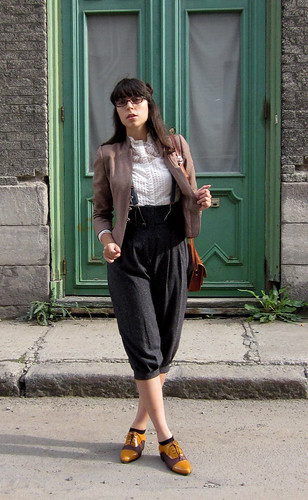

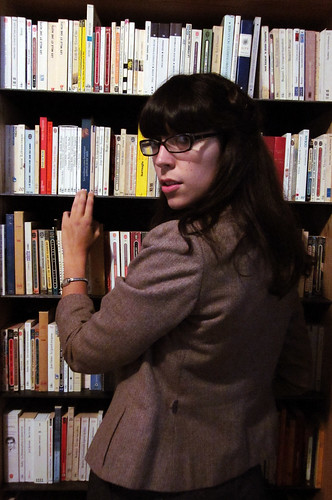

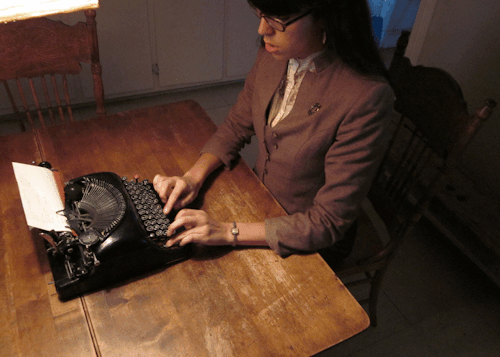

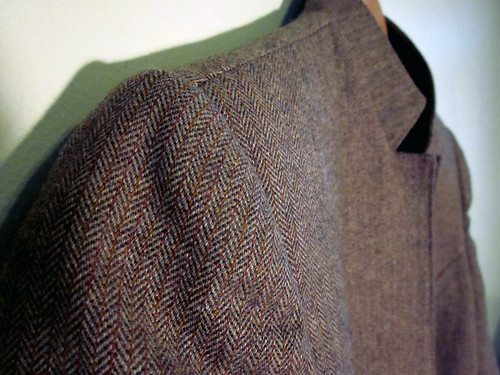



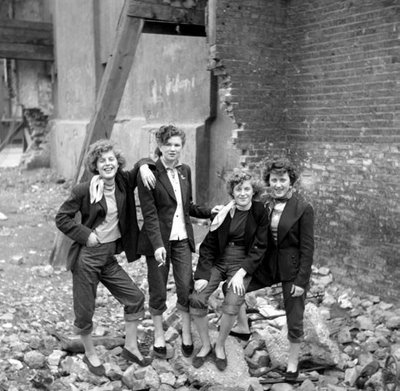

These photos were taken in January 1955 in Walthamstow, Poplar and North Kensington: solidly working class areas of London. The girls photographed embody three of the great issues of the time; class, gender and youth. They are rejecting the drab costumes of class conformity and post-war austerity. They are pioneers for women looking beyond home for a place to be valued. They are young girls blazing a trail that will be followed by youth cultures for decades to come. But somehow Teddy Girls as a group remain historically almost invisible.how great is that! pretty amazing if you ask me. i wish i could have known some of those teddy girls... hell, maybe some one you brits might have had a relative who was a teddy girl! ask around.






Copyright 2009
Missed Spring. Powered by Blogger
Blogger Templates created by Deluxe Templates
Wordpress by Wpthemesfree
Blogger Showcase